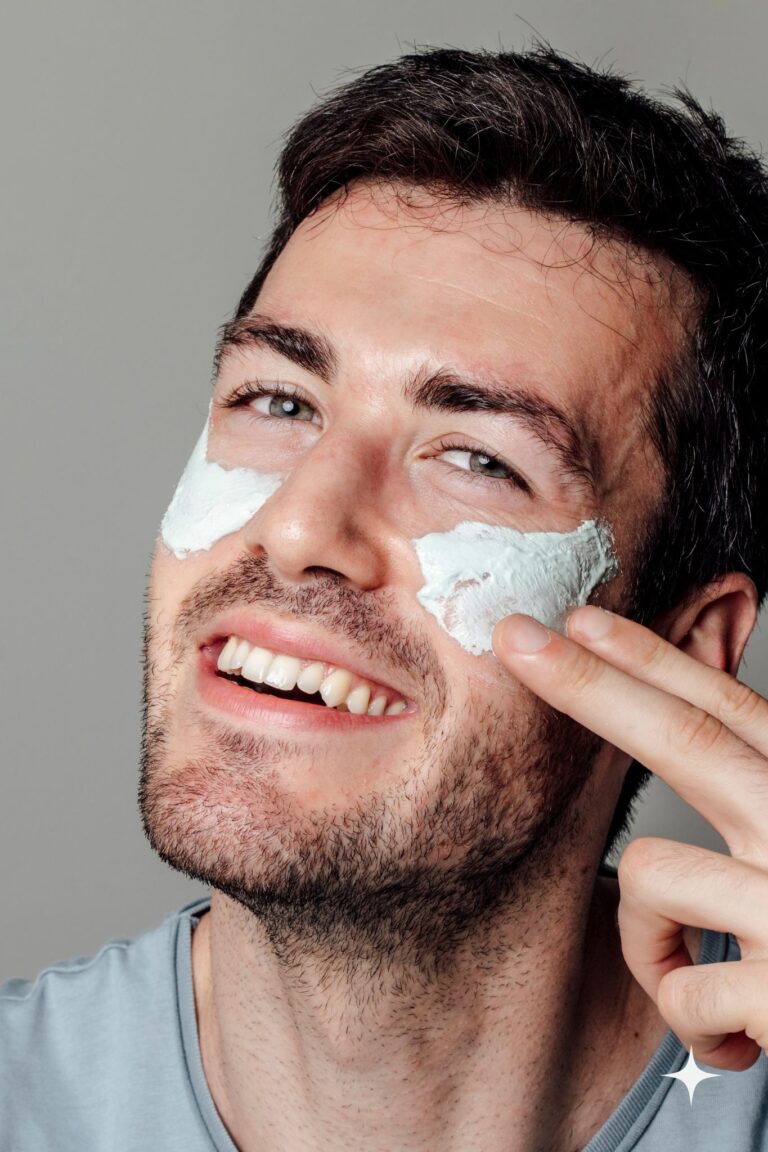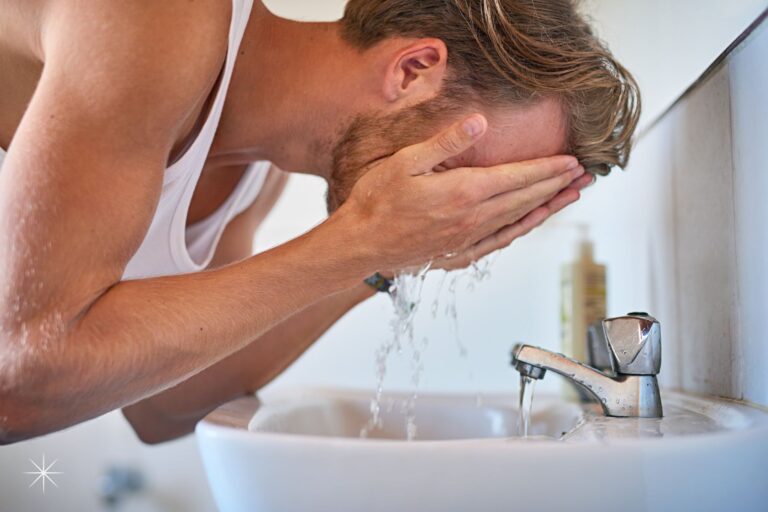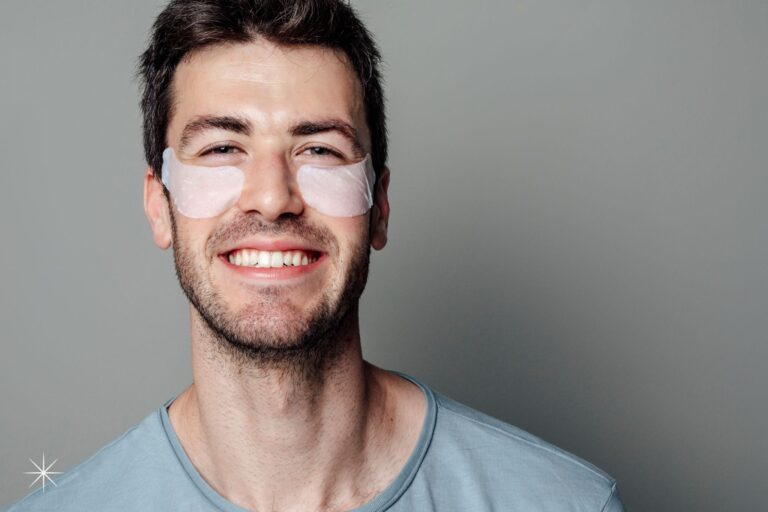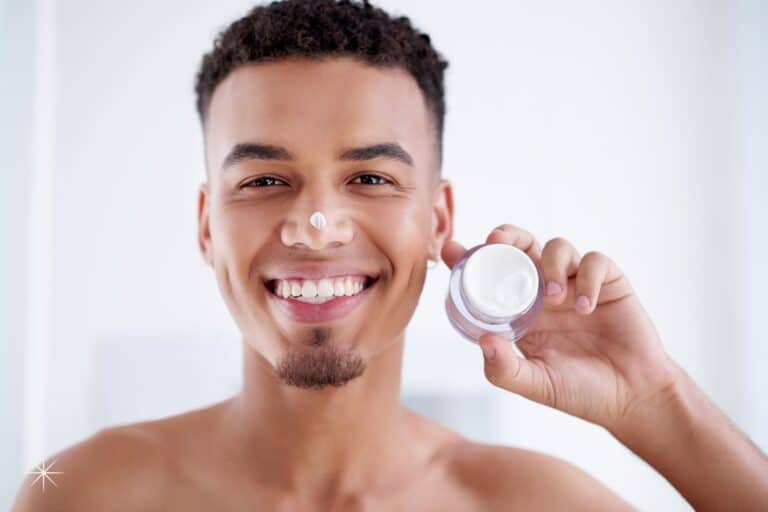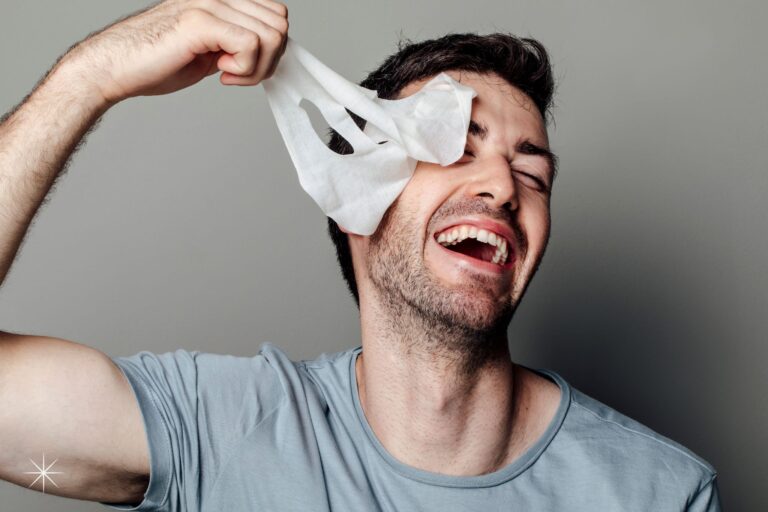Understanding and Treating Skin Elasticity Loss in Men: A Complete Guide
As men, we often overlook the subtle changes in our skin until they become impossible to ignore. One day, you might look in the mirror and notice that your skin doesn’t bounce back like it used to. This loss of skin elasticity, known medically as elastosis, is a natural part of aging – but that doesn’t mean we have to accept it without a fight.
Need a roadmap to younger-looking skin? Our Practical Guide to Men’s Anti-Aging Routines helps you build a customized plan that fits your goals and schedule.
Key Takeaways
Recent studies show that men can effectively combat skin elasticity loss through a combination of proper skincare, lifestyle changes, and targeted treatments. The key is understanding the underlying causes and taking proactive steps before major changes occur. From daily habits to professional treatments, there are numerous evidence-based approaches to maintaining youthful, resilient skin.

What Causes Loss of Skin Elasticity in Men?
The science behind skin elasticity is fascinating and complex. Your skin’s bounce and firmness come from two crucial proteins: elastin and collagen. As we age, several factors contribute to their breakdown:
- Natural Aging Process: After age 30, collagen production decreases by about 1% annually
- Sun Exposure: UV radiation accelerates elastin breakdown
- Lifestyle Factors: Smoking, poor diet, and lack of sleep impact skin health
- Hormonal Changes: Decreasing testosterone levels can affect skin thickness and elasticity
- Environmental Stressors: Pollution and free radicals contribute to premature aging
Signs of Elasticity Loss in Male Skin
Understanding the early warning signs can help you take action before significant changes occur:
- Skin that takes longer to snap back when pinched
- Increased sagging around the jawline and neck
- Deep wrinkles that remain even when facial muscles are relaxed
- Looser skin texture, especially around the eyes and mouth
- Less defined facial contours
Prevention Strategies for Maintaining Skin Elasticity
The best defense against elasticity loss is a good offense. Here’s how to protect your skin:
Sun Protection
UV radiation is the primary external factor in premature skin aging. Use a broad-spectrum SPF 30+ sunscreen daily, even on cloudy days. Look for formulations specifically designed for male skin, which tend to be lighter and less greasy.
Proper Skincare Routine
Establish a consistent skincare routine that includes:
- Gentle cleansing twice daily
- Regular exfoliation to remove dead skin cells
- Moisturizing to maintain hydration
- Using products with antioxidants like Vitamins C and E
Looking to start an anti-aging routine that works? Discover all the essentials in How to Build an Effective Anti-Aging Skincare Routine for Men and take the first step toward lasting, youthful skin.
Lifestyle Modifications
Your daily habits significantly impact skin health:
- Stay hydrated with at least 8 glasses of water daily
- Get 7-9 hours of quality sleep
- Exercise regularly to improve circulation
- Maintain a balanced diet rich in proteins and antioxidants
- Avoid smoking and excessive alcohol consumption
Effective Treatments for Skin Elasticity Loss
Topical Solutions
Several ingredients have shown promising results in improving skin elasticity:
- Retinoids: Increase collagen production and cell turnover
- Peptides: Help stimulate collagen synthesis
- Hyaluronic Acid: Improves skin hydration and plumpness
- Vitamin C: Protects against free radical damage and boosts collagen production
- Niacinamide: Improves skin barrier function and reduces inflammation
Professional Treatments
For more significant results, consider these professional interventions:
- Microneedling: Creates controlled micro-injuries to stimulate collagen production
- Radiofrequency Therapy: Heats deep skin layers to promote collagen remodeling
- Ultrasound Therapy: Targets deep tissue layers for skin tightening
- Chemical Peels: Removes damaged outer layers to reveal fresher skin
- PRP (Platelet-Rich Plasma): Uses your own blood components to stimulate healing
Natural Remedies and Supplements
Some natural approaches can complement your skincare routine:
- Facial exercises to maintain muscle tone
- Natural oils (jojoba, argan, rosehip) for hydration
- Collagen supplements (though evidence is mixed)
- Antioxidant-rich foods and supplements
- Regular facial massage to improve circulation
When to Seek Professional Help
Consider consulting a dermatologist if you notice:
- Rapid or unusual changes in skin elasticity
- Poor response to over-the-counter treatments
- Concerns about specific problem areas
- Interest in professional treatment options
- Underlying skin conditions affecting elasticity
Our Take
The loss of skin elasticity in men is a natural process, but that doesn’t mean we’re powerless against it. By understanding the causes and taking proactive steps, you can maintain firmer, more resilient skin well into your later years. Remember, it’s never too early to start caring for your skin, but it’s also never too late to make improvements.
The key is consistency and choosing the right combination of treatments and lifestyle changes for your specific needs. Start with the basics – sun protection, proper skincare, and healthy habits – and gradually incorporate more targeted treatments as needed. Your future self will thank you for taking action today.
Have you noticed changes in your skin’s elasticity? The best time to start addressing these changes is now. Consider scheduling a consultation with a skincare professional to develop a personalized treatment plan that works for your lifestyle and skin concerns.



